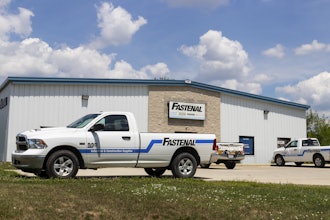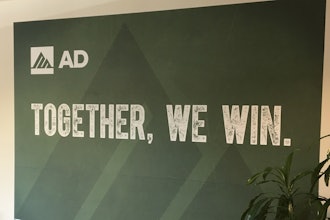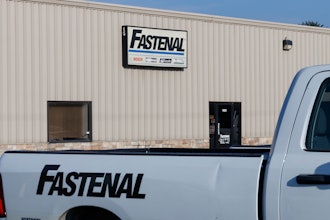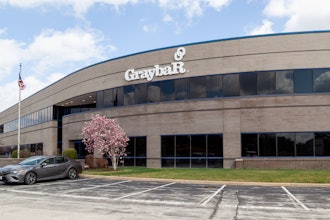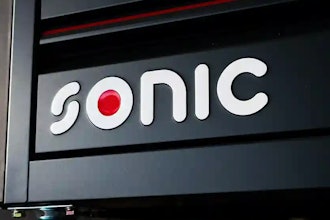
“Success breeds complacency. Complacency breeds failure. Only the paranoid survive.”
- Andy Grove, Intel
For a moment, think of your best customer. Your best customer delivers a significant amount of profit to your bottom line. Your best customer appreciates your value added and rarely complains about the price. They’re easy to work with and pay their bills on time. You love working with this customer.
Fact: Your best customer is the competition’s best prospect. As hard as you’ve worked to win that business, your competition is working harder to steal it.
Have you ever seen your competitor’s marketing material on your customer’s desk, or you your competitor’s truck parked at your customer’s? You feel mildly anxious and wonder, “Why is my competitor here? Did my customer call them? Are they going to fire me?” Don’t run away from this stress; run towards it. Embrace this positive sense of insecurity and take action. This spark of panic serves as a catalyst to create more value.
In Value-Added Selling, this action is called Tinkering. Tinkering is acting on your productive discomfort with the status quo. It is the behavioral response to your insecurity of losing the business. Tinkering is an action word. This verb moves. Therefore, you must move to tinker. The tinkering rules that follow will help guide your efforts:
Progress Over Perfection
Encourage unbridled dreaming and positive action, not perfection. Some things need not be perfect to bring value. Perfection can be the enemy of progress, especially when you wait endlessly for that final improvement. Reid Hoffman, the co-founder of LinkedIn, offers sage advice for companies striving for perfection over progress. He said, “If you are not embarrassed by the first version of your product, you’ve launched too late.”
Companies often strive for perfection at the cost of progress. Never diminish the impact of positive incremental change. The key is to get busy dreaming and doing. Few products go to market in their finished state. The key is to humbly and continuously look for improvement opportunities.
Conduct a Failure Analysis
How do you respond to service failures? Like most sellers, you quickly fix the issue and move on. It seems we’re in a never-ending game of whack-a-mole. Once we whack away one problem, we move on to the next. To kill a weed, you attack the root. Similarly, to solve a problem, focus on the root cause.
Perform a failure analysis and ask the five whys. This analytical method was vital to Toyota’s success in production and quality. This means asking “why” five times to drill down on the root cause of the problem.
One of my clients noticed higher-than-average wait times. This organization was eager to address this concern because quick service is part of its brand promise. This company didn’t focus on training or investing in new technology. Instead, they started asking, “Why?” They continued to ask “why” until they found the root cause. Ultimately, my client discovered the root issue. They had recently switched logistics partners, and lead times were longer than normal. Customer service was flooded with calls to check order status. The company automated this process, allowing its team to serve customers more quickly. My client solved the (root) problem through automation. This small step in the right direction then sparked curiosity. My client uncovered additional ways to enhance the customer experience through automation. Solving one problem encourages you to solve another.
Conduct a Barrier Analysis
Too often, organizations unknowingly place obstacles along their customer’s path to satisfaction. Tinkering means eliminating barriers that prevent your company from delivering world-class service. A useful tinkering activity is to ask, “What gets in the way of delivering the kind of value-added service that we know we can deliver?” Ask employees. Ask customers. Asking and answering that question releases the brakes to deliver more value.
Another helpful exercise is to map out the sequence of steps customers go through, from need recognition to need satisfaction. This exercise is called the Critical Buying Path (CBP). This CBP is your end-to-end customer experience. As you highlight each step along the customer path, ask, “How can we create maximum value at each step?” As you uncover new opportunities to add value, identify barriers hampering your ability to create value.
Build a Better Mousetrap
Tinkering is at the heart of differentiation. Emerson said, “If a man can write a better book, preach a better sermon, or make a better mousetrap than his neighbor, though he builds his house in the woods, the world will make a beaten path to his door.”
Seeking to build a better mousetrap is living the “what if” question. “What if we could do it this way?” “What if we could make our product do this?” Every great innovation is the evolution of another great idea. Tinkerers think forward and visualize endless possibilities, stretching their imaginations to their outer reaches.
You can ask the “what if” question throughout your company and with your customers. “What would you like to see from suppliers that is not currently available?” and “What would you like to have that you cannot get now?” You may work for one of the oldest distributors in the industry, but these questions make you one of the more progressive competitors in the industry. You sound like an innovator.
Tinkering requires an insatiable desire to improve. Yet, too many organizations (and salespeople) are satisfied with their current success and capabilities. Satisfaction is the enemy of progress. Oliver Wendell Holmes could’ve been referring to salespeople when he said, “The average person goes to his grave with music still in him.” What if there is another level of innovation and capacity within you? Now is the time to tap into that capacity and uncover your true potential. Let that music out and extend your capacity to create value.
Paul Reilly, is a speaker, sales trainer, author of Selling Through Tough Times, coauthor of Value-Added Selling, fourth edition, and host of The Q and A Sales Podcast. For additional information on Paul’s keynote presentations and seminars, call 636-778-0175 or email [email protected]. Visit www.TomReillyTraining.com and signup for the free newsletter.









